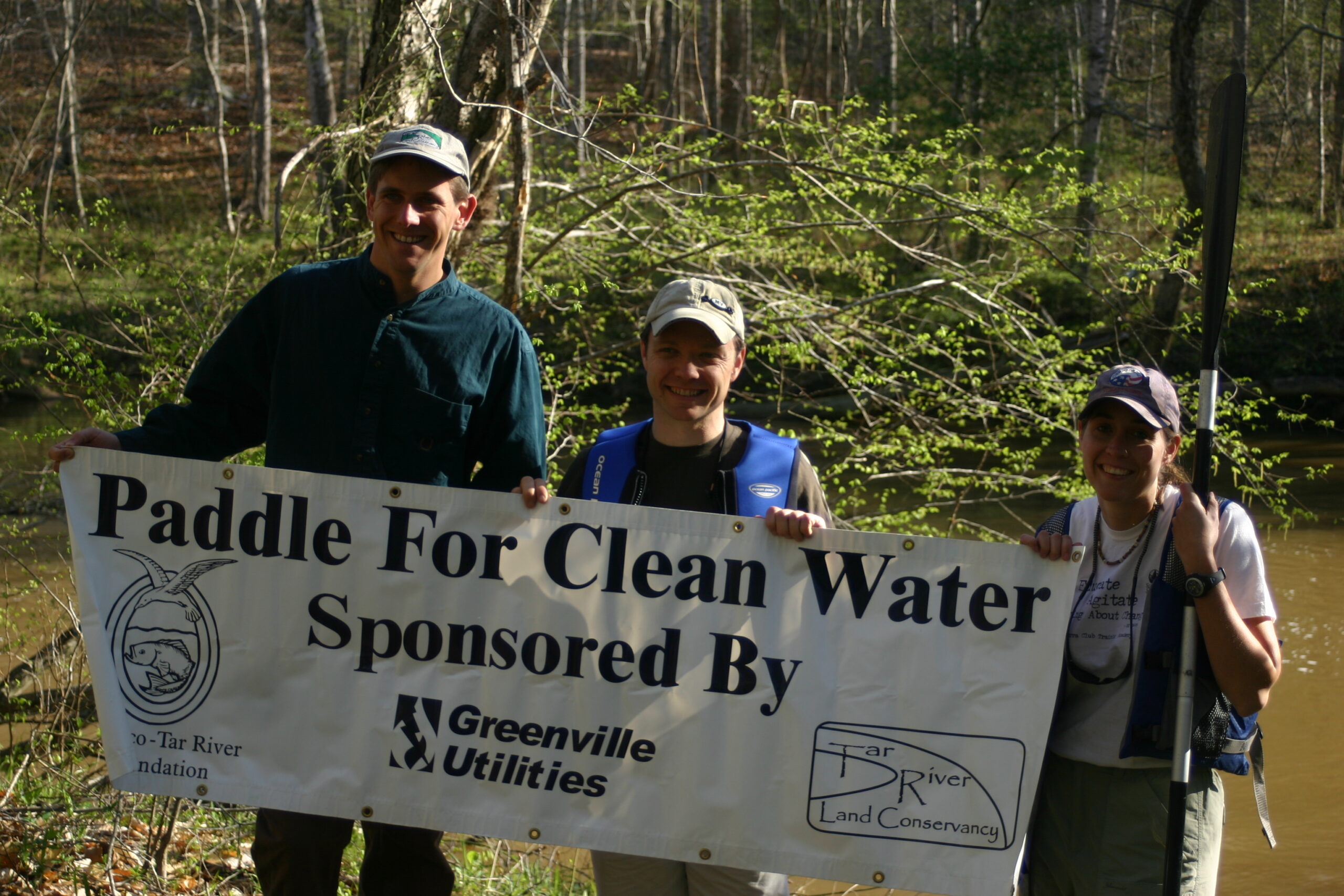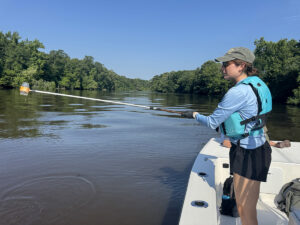News
Paddle for Clean Water: A truly epic adventure
Education, Environmental, Sound Rivers
Posted on October 9th, 2020
by Heather Deck, Executive Director
It was a beautiful spring day in April 2005 when I found myself on the banks of the Tar River in Granville County. I had just finished hauling my 9 foot kayak with all that I would need to survive the next 2 weeks down the trail to a spot along the river just wide enough to launch the boat. This boat, white and full of scrapes and gouges from river trips past, would be my constant companion, traveling 165 miles to Washington.
 The trip was dubbed, “Paddle for Clean Water”; an opportunity for a young Riverkeeper to see, first-hand, each and every mile of the Tar River and to lift up the importance of a clean and healthy river to the towns and communities along the way. After several months of planning, I was finally off.
The trip was dubbed, “Paddle for Clean Water”; an opportunity for a young Riverkeeper to see, first-hand, each and every mile of the Tar River and to lift up the importance of a clean and healthy river to the towns and communities along the way. After several months of planning, I was finally off.
The warm day started off smoothly as I set off with two companions. Fritz Herman, a longtime PTRF member and river advocate, paddled with me through the first section to Louisburg. And my friend and local Sierra Club member, Kevin DeBruhl, enjoyed the entire river adventure with me. We were also aided by longtime member Marshall Floyd and another volunteer who guided us through the rock gardens and rapids of the first six miles. This was a Tar River completely different from the river in Pitt County. Large, gray boulders lined the shore and mountain laurel could be seen blooming on the steep rocky ridges that rose up from the banks. Before the end of the first day, we ran through a fun class II rapid dubbed the “school bus rapid,” where an old and very rusty bus had been dumped in the woods many years before.
The first three days were beautiful as well as tough going. We had to portage over treefall countless times, and found ourselves wet and weary. But by the second morning, at the camp I later called camp Tabbs, we woke to ice in our water bottles and river fog laying thick like a blanket just over the top of the water. It was breathtakingly beautiful.
camp I later called camp Tabbs, we woke to ice in our water bottles and river fog laying thick like a blanket just over the top of the water. It was breathtakingly beautiful.
The following week we paddled from the piedmont of North Carolina into the coastal plain. The river began to widen and slow. The rocks and boulders slowly faded away and the river bottom turned to sand and muck. Our aching muscles grew weary. On the last day, more than two dozen paddlers joined me for the final 10 miles to Washington and the start of the Pamlico River.
Along the way I was in awe of the beauty of nature I witnessed. I first came across cypress trees just upstream of Louisburg, and the first spanish moss I spotted was west of Greenville. I found myself floating through a great blue heron rookery, near nesting geese and ducks, passing snakes sunning on downed trees, and listening to the slapping tails of nosey beavers at night. I had a constant escort of chirping kingfishers, with one following along until it reached the territory of another, then circling back from whence it came. From Oxford to Beaufort County, through Louisburg, Rocky Mount, Tarboro, Greenville and Washington, I was able to see, first-hand, a magnificent river and the communities who depend on it.
This trip is about celebrating the beauty of the river and recognizing what Sound Rivers, local governments and other organizations are doing to protect it. It is extremely important that we understand the issues that affect the health of this resource and what we can do to sustain and improve the quality of the Tar River.
And now, it is our new Pamlico-Tar Riverkeeper, Jill Howell, and our Project Coordinator Clay Barber’s turn to see all the Tar River has to offer. It is their time for their epic adventure. I hope you follow along with them on their journey and help to lift up their voices as they work, tirelessly, to protect the river; the lifeblood of our region.
Related News

Neuse fish kill expected to extend beyond holiday weekend
July 3rd 2025

Swim Guide fails prompt Maple Cypress investigation
July 3rd 2025

Riverkeeper, town partners root out source of Smithfield sediment pollution
July 3rd 2025

Trash trap No. 12 approved for Smithfield
July 3rd 2025

Sunset River Paddle fundraiser boosts Water Quality Fund
July 3rd 2025

Riverkeepers host quarterly Water Watch meeting
July 3rd 2025

Public hearing will determine the fate of many NC wetlands
June 26th 2025

Clayton gets first official trash-trap cleanout
June 25th 2025

